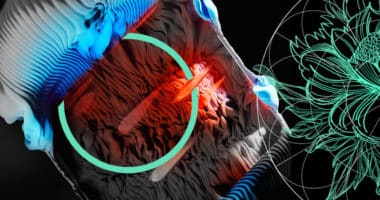Artificial Intelligence is getting increasingly sophisticated at doing what humans do, but more efficiently, more quickly and at a lower cost. The potential for both AI and robotics in healthcare is vast. Just like in our every-day lives, AI and robotics are increasingly a part of our healthcare eco-system, says PwC Global. We have highlighted eight ways that showcase how this transformation is currently underway.
Artificial intelligence has potential to revolutionize healthcare
Building on automation, artificial intelligence (AI) has the potential to revolutionize healthcare and help address some of the challenges set out above. There are several definitions of AI, but this report draws from a concise and helpful definition used by the European Parliament,
AI is the capability of a computer program to perform tasks or reasoning processes that we usually associate with intelligence in a human being. AI can lead to better care outcomes and improve the productivity and efficiency of care delivery.
It can also improve the day-to-day life of healthcare practitioners, letting them spend more time looking after patients and in so doing, raise staff morale and improve retention. It can even get life-saving treatments to market faster.
Impact AI could
At the same time, questions have been raised about the impact AI could have on patients, practitioners, and health systems, and about its potential risks; there are ethical debates around how AI and the data that underpins it should be used.
One of AI’s biggest potential benefits is to help people stay healthy so they don’t need a doctor, or at least not as often. The use of AI and the Internet of Medical Things (IoMT) in consumer health applications is already helping people.
Technology applications and apps encourage healthier behaviour in individuals and help with the proactive management of a healthy lifestyle. It puts consumers in control of health and well-being.
AI increases the ability for healthcare
Additionally, AI increases the ability for healthcare professionals to better understand the day-to-day patterns and needs of the people they care for, and with that understanding they are able to provide better feedback, guidance and support for staying healthy.
The report does not attempt to cover all facets of this complex issue, in particular the ethics of AI or managing AI-related risks, but does reflect the efforts on this important topic led by EIT Health and other EU institutions. Equally, while it acknowledges the potential disruptive impact of personalization on both healthcare delivery and healthcare innovation in the future (e.g., in R&D), the report focuses primarily on the impact of AI on healthcare professionals and organizations, based on the use cases available today.

Healthcare leaders have been far too timid about becoming truly transparent. We urge giant steps — now. Healthcare organisations must become transparent in all dimensions: among caregivers, between caregivers and patients, between organisations, and with the public.
First, caregivers need to share information openly about hazards, errors and adverse events.
People cannot improve AI systems
People cannot improve systems if they cannot talk about what they are experiencing. Individuals must be able to report errors without fear of punishment or embarrassment. They must be convinced that the response will be, not, “Who failed?” but, rather, “What happened?”
Second, caregivers need to be open with patients when things go wrong. Unfortunately, many risk managers still coach clinicians to limit what they reveal, blaming the malpractice dragon, despite examples, such as the University of Michigan Hospital, that have adopted “extreme honesty” and seen substantial decreases in the number of suits and costs. We should emulate their bold example: promptly acknowledge when things go wrong, explain the causes as they are understood and apologise when patient harm comes from failures in care. Hospital leaders must fully support caregivers as they strive to be more transparent.
This form of transparency is not just a technical imperative, it is a moral imperative. We have neither a legal nor a moral right to withhold from patients information on harm done to them, even if that harm is accidental.
Third, just as individual clinicians should exchange information on injuries and hazards, so should organisations. In the aviation industry, if a hydraulic device proves faulty in Dallas, the sun will not set before mechanics know about it in Denver and Dubai.
Healthcare organisations hesitate to exchange lessons
However, in healthcare, organisations hesitate to exchange lessons openly for many of the same reasons that individual staff do. To make this sharing worthwhile, healthcare organisations also need to invest heavily in the analysis of those reports by experienced professionals.

The fourth meaning of “transparency” is the one that most laypeople, purchasers and regulators use: public reporting about harmful incidents. Many organisations have championed public reporting on harm, and some states are now requiring it for so-called never events.
So far, healthcare has addressed transparency mainly in the form of incident-reporting systems—our fourth definition. A more robust approach will serve us better: extreme transparency of all four types: among staff, between caregivers and patients, among institutions, and in open and clear reports to the public at large.
AI is already being used to detect diseases, such as cancer, more accurately and in their early stages. According to the American Cancer Society, a high proportion of mammograms yield false results, leading to 1 in 2 healthy women being told they have cancer. The use of AI is enabling review and translation of mammograms 30 times faster with 99% accuracy, reducing the need for unnecessary biopsies.
The proliferation of consumer wearables and other medical devices combined with AI is also being applied to oversee early-stage heart disease, enabling doctors and other caregivers to better monitor and detect potentially life-threatening episodes at earlier, more treatable stages.
AI helpins healthcare organizations apply cognitive technology
AI for Health is helping healthcare organizations apply cognitive technology to unlock vast amounts of health data and power diagnosis. Watson can review and store far more medical information – every medical journal, symptom, and case study of treatment and response around the world – exponentially faster than any human.
Google’s DeepMind Health is working in partnership with clinicians, researchers and patients to solve real-world healthcare problems. The technology combines machine learning and systems neuroscience to build powerful general-purpose learning algorithms into neural networks that mimic the human brain.
Improving care requires the alignment of big health data with appropriate and timely decisions, and predictive analytics can support clinical decision-making and actions as well as prioritise administrative tasks.
Using pattern recognition to identify patients at risk of developing a condition – or seeing it deteriorate due to lifestyle, environmental, genomic, or other factors – is another area where AI is beginning to take hold in healthcare.
Beyond scanning health records to help providers identify chronically ill individuals who may be at risk of an adverse episode, AI can help clinicians take a more comprehensive approach for disease management, better coordinate care plans and help patients to better manage and comply with their long-term treatment programmes.
Robots have been used in medicine for more than 30 years. They range from simple laboratory robots to highly complex surgical robots that can either aid a human surgeon or execute operations by themselves.
In addition to surgery, they’re used in hospitals and labs for repetitive tasks, in rehabilitation, physical therapy and in support of those with long-term conditions.
Robots have the potential to revolutionise end of life care
Robots have the potential to revolutionise end of life care, helping people to remain independent for longer, reducing the need for hospitalisation and care homes. AI combined with the advancements in humanoid design are enabling robots to go even further and have ‘conversations’ and other social interactions with people to keep aging minds sharp.
Drug research and discovery is one of the more recent applications for AI in healthcare. By directing the latest advances in AI to streamline the drug discovery and drug repurposing processes there is the potential to significantly cut both the time to market for new drugs and their costs.
The engagement of consumers in care partnerships is essential to achieve quality and safety in healthcare. Whether pursuing healthy living, as patients receiving care, or as purchasers (future patients), individuals and their families must play a central role. The guiding principle is “If health is on the table, then the patient and family must be at the table, every table, now.”








